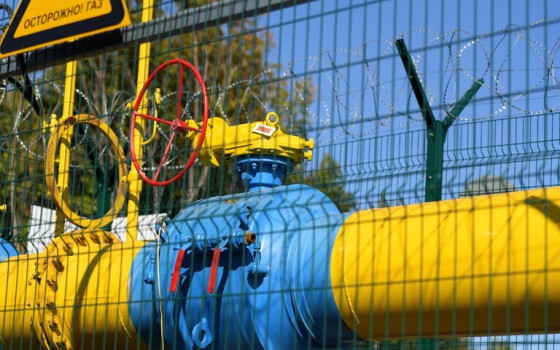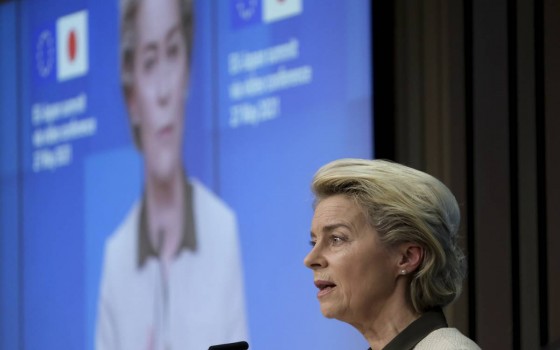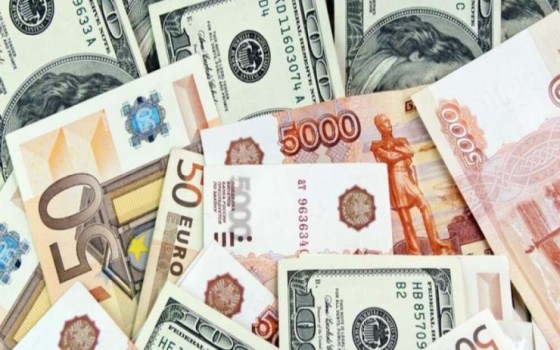
Europe is resorting to using gas reserves from storage facilities to counter the cold weather

- Europe and Arabs
- Monday , 12 December 2022 16:22 PM GMT
Europe has resorted to using more and more gas from storage facilities because of the cold weather, despite calls from politicians to conserve fuel.
And according to Russia Today, gas consumption from storage facilities in Europe, under the influence of cold weather, has exceeded average values for this time in recent years, as weather in which temperatures are much lower than long-term averages for this time of the year has forced the industry to use more gas. Gas, as the weather in Europe is also expected to be one or two degrees cooler this week than last week.
At the same time, requests for Russian gas through the territory of Ukraine remained at the same level as the previous days and months, as the company "Operator GTS of Ukraine" from the Russian company "Gazprom" accepted a request for transit on Monday of 42.4 million cubic meters, as the Ukrainian company said. The number is the same as yesterday, Sunday. Where the capacity of one of the crossing points was announced to the Ukrainian operator, which is the "Sudja" gas metering station, and the request through the "Sukharanovka" station was not accepted.
And "Operator GTS of Ukraine" announced that there is no force majeure to accept the gas for transit through "Sukharanovka", as the company claims that it cannot control the operational and technological control of the compressor station "Novobskov". The road through "Sukharanovka" guarantees the passage of more than 30 million cubic meters per day. The Russian holding company believes that there are no reasons for force majeure, nor are there any obstacles to continuing work in the previous manner.
The value of the delivery contract "one day in advance" at the TTF center in the Netherlands is $1,560 per 1,000 cubic metres.
Prices rose in Asia as well, following European prices, with February futures contracts on the JKM Platts "Japan Korea gauge", which reflects the spot market value of goods shipped to Japan, South Korea, China and Taiwan, reaching $1,303.
Electricity generation from wind turbines in Europe last week averaged 10% of the EU's energy balance, according to WindEurope, the European wind association. In November, however, windmills gave twice as much.
The "North Stream" gas pipeline was also completely stopped due to a number of sanctions problems related to equipment maintenance, in addition to the bombing of the "North Stream" lines last September near the Danish island of Bornholm.
The current inventory level in Europe fell to 88.48% and is 10.6C higher on average than the same date over the past five years, according to GIE Gas Infrastructure Europe. However, during Gas Day on December 8, reserves "lost" 0.5 percentage points, which was a new record since the beginning of the inventory season.
Also, gas extraction from storage facilities in the period between December 6-9 in the region exceeded the average values of the past five years.
The inventory season began this year, November 14, which is a record date in terms of its delay, while the Russian company, "Gazprom", warns that the load on storage facilities in Europe will be higher than in previous years due to the changing logistics and sources of gas supplies to the European market. .
Since the beginning of December, European LNG terminals have been operating at 70% capacity, which is roughly the same rate as in November (69%).
On the other side of the ocean, the position of reserves of gas storage facilities in the United States of America is gaining more and more importance in the global market, as the country is actively increasing gas exports (mainly to Europe), while production is growing at a slower pace. During the weekly report ending December 2, 0.6 billion cubic meters of gas storage facilities were withdrawn, with the current level of reserves around 72%, which is 2 degrees lower than the average for the past five years, according to the Energy Information Administration (EIA) of the US Department of Energy. It is much lower than the level of reserves in storage facilities in Europe and Asia.
The EIA now expects storage facility stocks to fall by 60 bcm this winter (the average of the last five years), and by the end of March, natural gas volumes in storage facilities will reach 40 bcm, which is 8% below the five-year average. .
Source: agencies












No Comments Found